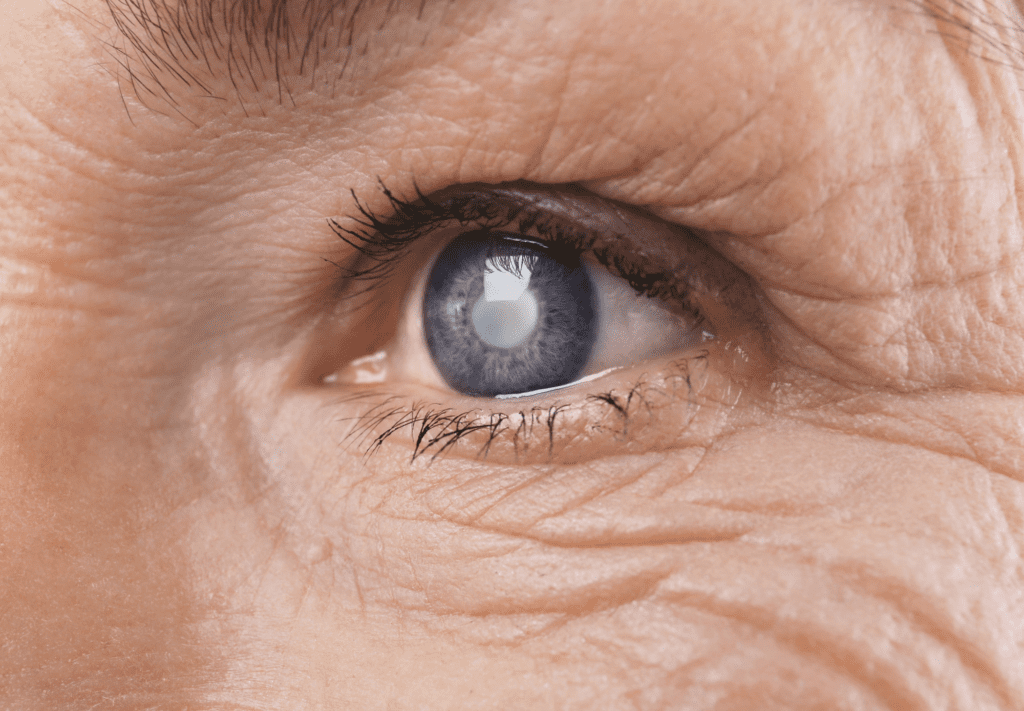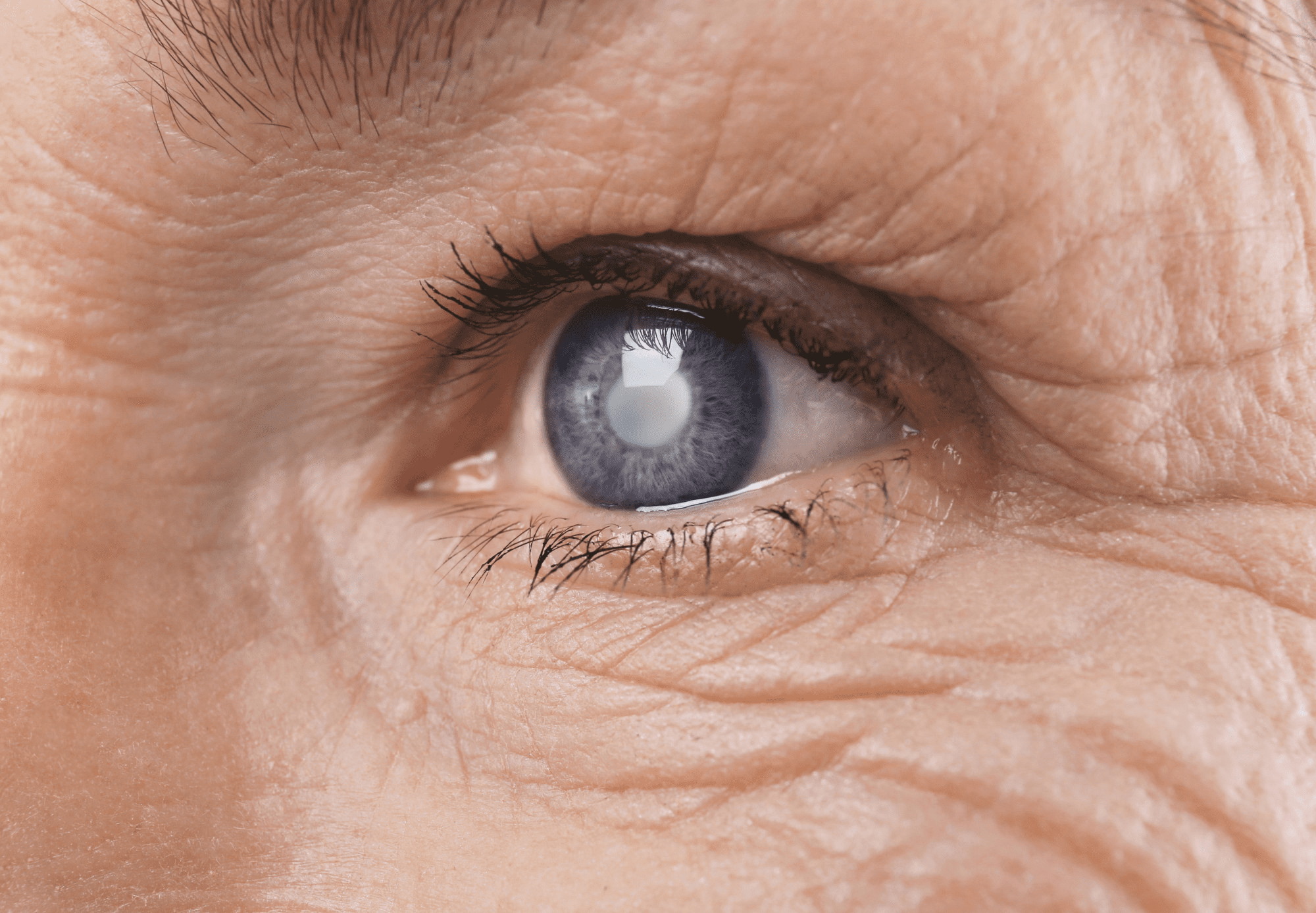
Do you know what’s scarier than plunging towards earth with only a bit of rope around your ankle?
Losing your eye-sight.
OK, tad dramatic, but for about 47% of Americans, fear of losing sight is the worst of health concerns.
But still many of us miss the red flags or take too long to respond to them we can potentially damage our eyesight forever. So we’ve compiled a list of common eye conditions, like bulging eyes, for you to… keep your eye on (sorry had to!).
1. Age-Related Macular Degeneration
AMD affects the center of the retina, known as the macula. This is the part of our eye responsible for most of our vision and it helps us read, drive, and do other activities that require razor-sharp vision.
There are two types of AMD:
Dry Macular Degeneration
Out of the two, this is the most common, and it occurs when tissues in the macula age and thin. This eye disease is also associated when small yellow deposits, called drusen, form underneath the retina.
Wet Macular Degeneration
This is when abnormal blood vessels form beneath the retina and bleeds, causing it to scar. Many people with wet AMD suffer from vision loss far quicker than those with dry AMD. Although this type of AMD affects 10% of people with the disease, it’s responsible for 90% of severe vision loss associated with AMD.
2. Bulging Eyes
Otherwise known as Proptosis and Exophythalmos in the medical world, bulging eyes can signify a serious medical condition. This is where the white of your eye shows between the iris and your upper eyelid protrudes.
The most common cause is an overactive thyroid gland. We rely on this gland to produce hormones to moderate our metabolism but when it produces too many, we suffer from hyperthyroidism.
Or we could link it to Graves’ disease, an autoimmune disorder, which results in hyperthyroidism and bulging eyes. You’ll note the tissues around your eye inflames and bulges.
3. Conjunctivitis (Pink Eye)
People of all ages can suffer from a pink eye. It’s when the tissue lining the back of your eyelids and covering your sclera becomes inflamed.
Because of this, your eyes will turn red, itchy, teary, and give you that niggling feeling there’s something in your eye. Be careful because it is highly contagious but luckily, it’s unlikely to damage your vision especially when treated early.
4. Glaucoma
This is one of the common eye conditions that get worse. Glaucoma is where the eye’s optic nerve is damaged and results in a pressure buildup within the fluid in your eye. Eventually, this could potentially damage the optic nerve responsible for sending messages to your brain.
The increased pressure, known as intraocular pressure, can result in permanent vision loss if untreated so always attend routine eye exams. There are two types of Glaucoma:
Open-Angle Glaucoma
One of the more common eye problems, open-angle or wide-angle glaucoma is where the trabecular meshwork (the drain structure of the eye) looks normal but the flow of liquid inside isn’t.
Angle-Closure Glaucoma
This variation affects the drainage of your eyes as the angle between your cornea and iris gets too slim, therefore resulting in an excessive pressure build-up in your eye.
5. Cataracts
Out of all the eye diseases, cataracts are the most well known. They are the cloudy splodges that develop in the eye lens that stop light from entering.
As a result, you can’t see as clear and may notice a halo around lights at night. You won’t notice a quick development or sharp pain, instead, cataracts stay small and don’t affect your sight.
Luckily, if cataracts progress and affect your vision, surgery can restore order.
6. Dry Eyes
This is one of the eye problems that prevent you from producing proper tears. We rely on tears to keep our eyes lubricated and when they fail; we suffer from dry eye syndrome.
You may feel like something in your eye is burning and in rare cases, can lead to loss of vision. We can get dry eye syndrome in an air-conditioned room, from looking at a computer screen all day or traveling on an airplane.
7. Night Blindness
Find it impossible to see at night especially when you’re behind the wheel? Difficult to find your seat in the darkened movie theater?
You may suffer from night blindness. This is one of the eye diseases that is linked to many problems like cataracts, keratoconus, and vitamin A deficiency.
Or it is because of genetics. But, unlike other eye conditions, night blindness can’t be treated so you must be careful in areas of low light.
8. Lazy Eye
Otherwise known as amblyopia, lazy eye occurs when it doesn’t develop properly. The weaker eye moves around while the other eye has a stronger vision and stays fixed.
Many children and adults get the lazy eye but it’s rare to find it in both eyes. You can avoid lifelong vision problems if you treat the lazy eye during early childhood.
The patient is given corrective glasses, a patch, or contact lenses to make the child use and strengthen the lazy eye.
…And Those Are the Common Eye Diseases!
Bulging eyes, cataracts, and glaucoma are all eye ailments that must be treated. Although not every eye condition on this list leads to vision loss, it’s important to book routine eye exams to ensure your eyes are healthy and your vision is protected.
Did you find this article helpful? If so, check out more of our content on everything from Lifestyle to healthy recipes.
